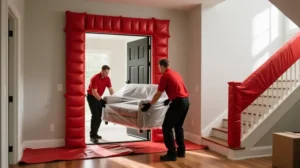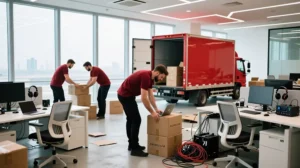High-value moves concentrate risk in glass, mirrors, and televisions. Edge chips and panel flex trigger cracks, returns, and claim disputes. Missing photographs and unclear valuation extend timelines and cost. A standardized packing protocol reduces impact transfer, controls flex, and supports defensible outcomes under recognized standards and regulations. The protocol specifies materials and carton classes, adds rigid edge and face protection, sets cushioning clearances, enforces upright orientation, immobilizes loads, requires orientation labels, and documents condition and valuation. Steps progress from bench preparation to sealed load and vehicle restraint in the same order every time.
The article explains each step for glass, mirrors, and TVs, then provides field checklists, a minimum configuration table, and concise answers to common questions. Consistent execution lowers error rates and claim frequency.

What is the claim-prevention protocol for glass, mirrors, and TVs?
A claim-prevention protocol sets materials, clearances, orientation, and documentation so crews execute the same sequence every time. It combines standards-validated packaging with upright handling and valuation records.
Standards and transport environment
ASTM D4169 evaluates a complete packout using a defined sequence of distribution hazards that includes drop, vibration, compression, and related stresses. The 2022 revision updated the air-vibration profile with three intensity levels and a revised frequency band noted by accredited labs, improving alignment with measured transport.
Dubai and the UAE heat amplify packaging risk. The UAE reached 50.1 °C on July 16, 2023; coastal Dubai often sits in the mid-40s in peak summer. Temperature shifts affect foam response and tape adhesion, so immobilization and adequate clearance are critical.
Materials and setup
Use mirror or glass cartons for framed pieces and purpose-built TV boxes with foam end caps for screens. Add rigid face sheets and corner guards to control edge stress and keep every unit upright during packing and transport. Retail mover guides specify one mirror or artwork per mirror carton with dense void-fill to remove internal play.
Execution steps
- Inspect and document: photograph faces and edges; record TV model and serial; select valuation or arrange transit insurance before loading.
- Protect faces and edges: apply a corrugated face sheet and corner guards; for glass, add a low-tack tape X prior to wrap.
- Box or crate: one item per mirror carton; crate oversized or heavy glass for rigidity.
- Immobilize and orient: fill voids until there is zero movement; keep all units upright; place orientation arrows. UPS and U-Haul reiterate upright handling for TVs.
- Load and secure: place upright against stable surfaces; block and brace to prevent tipping and flex in transit.
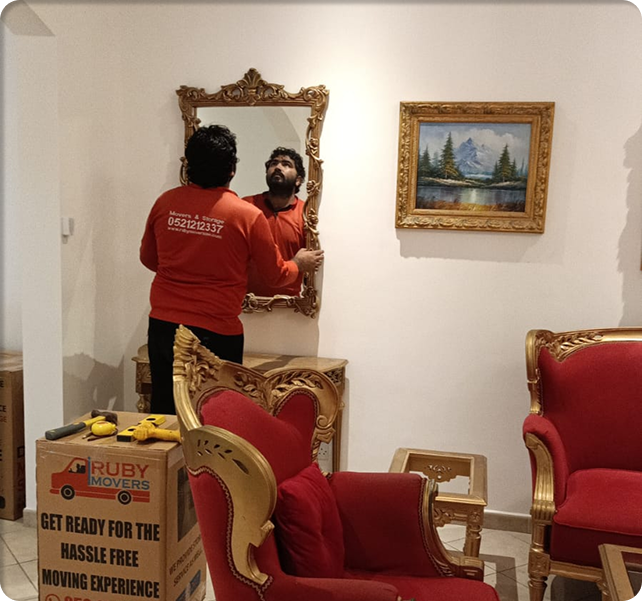
Recommended packing configurations for Dubai and the UAE
Use these configurations to specify container type, edge and face protection, immobilization target, and orientation for fragile items moved in UAE conditions.
| Item | Primary container | Edge and face protection | Immobilization target | Orientation |
|---|---|---|---|---|
| Framed art with glass | Mirror or glass carton | Corner guards with corrugated face sheet | No internal play after fill | Upright |
| Wall mirror | Mirror box sized to item | Corner guards with a rigid face | Dense paper or bubble at edges | Upright |
| Heavy glass top | Custom wood crate | Rigid bracing at edges | Foam rails with clearance | Upright or crated flat with blocks |
| Flat-screen TV | OEM or purpose TV box | Foam end caps | Fill gaps to zero movement | Upright |
Which materials create a professional packing kit?
A professional kit for glass, mirrors, and TVs combines rigid containment, edge protection, controlled cushioning, and upright handling. Dubai and UAE heat push materials toward creep and adhesive loss, so selections must retain performance at temperatures that reach 50.1 °C.
Core containers and protectors
Use mirror or glass cartons for framed pieces and a purpose-built TV box with foam end caps. Add corner guards and a rigid face sheet to control edge stress where most cracks start. UPS and major mover guides require upright TV transport with directional arrows and secure foam so the set cannot shift.
Cushioning and wrap
Select bubble cushions with proven air retention to avoid collapse in long, hot transits; Sealed Air reports barrier bubbles that retain up to 90% of their thickness through the shipping cycle. For general wrapping, a 3/16-inch bubble gives conformance without excess bulk; add dense paper to lock edges. Temperature affects foam shock absorption from −20 °C to 50 °C, so maintain clearance that lets foam work across Dubai’s climate range.
Tape and immobilization
Use heavy carton tape on all seams and reinforce stress points. Fill voids until there is zero internal play; UPS and retailer instructions emphasize immobilization to prevent side-to-side movement. Mark orientation on all faces.

Material specifications and tasks
| Component | Minimum specification | Purpose |
|---|---|---|
| Mirror or glass carton | Four-piece mirror box sized to the item | Rigid containment for framed glass and mirrors |
| Rigid face sheet | Single corrugated sheet sized to frame | Spreads loads and limits glass flex |
| Corner guards | Four corners per frame | Shields edges where cracks initiate |
| Bubble wrap | 3/16-inch general wrap; barrier-layer product | Conformance and air retention for surfaces |
| Foam elements | End caps or rails matched to the TV or crate | Absorbs shock; maintains clearance across −20 °C to 50 °C |
| Purpose TV box | OEM or purpose box plus foam end caps | Upright transport and immobilization |
| Carton tape | Heavy-duty sealing on all seams | Maintains closure under heat and vibration |
Technical requirements for Dubai conditions
- Upright only for TVs: UPS instructs upright handling with directional arrows and immobilization so the set cannot shift. This reduces panel and mount stress during vibration.
- Air-retention matters: Barrier bubble retains ≥90% inflation through transit, improving cushion reliability in hot warehouses.
- Foam selection by density: Common packaging planks range from 1.7 to 2.2 pcf for electronics and framed glass, with higher densities (4–9 pcf) used where loads concentrate. Match density to weight and clearance to avoid bottoming.
- Standards alignment: ASTM D4169-22 revised the air-vibration spectrum to 200 Hz maximum and three intensity levels, increasing realism for fragile freight exposed to aircraft and high-speed road profiles. Cite the revision in SOPs to justify the kit.
Why this kit performs in the UAE
- Climate: Dubai and UAE highs reach 50 °C; adhesives and foams must hold shape and energy absorption at these temperatures.
- Standards: ASTM D4169 evaluates drop, vibration, compression, and related hazards on the same packout; the 2022 revision updates the air-vibration profile to better reflect measured transport.
- Orientation: Upright handling reduces panel stress and mount loads on televisions; carriers instruct upright packing with arrows and secure foam.
Short checklist for Dubai conditions
- One framed piece per mirror carton, upright, face sheet in place, corners guarded.
- TVs in purpose boxes with end caps, gap-fill to zero play, arrows on all faces.
- Barrier bubble on surfaces, PE foam rails sized to achieve working deflection at 40–50 °C ambient.
- Acrylic tape for hot, humid storage; hot-melt tape only where high shear is needed and exposure is controlled.
Quick checks during packing
- One framed item per mirror carton; no mixing.
- Face sheet in place before wrap; corners guarded.
- Bubble wrap applied without compression; verify air-retention product when possible.
- Foam end caps seated; gaps filled until no movement; box labeled upright on all faces.
How to pack framed glass and artwork for transport
Pack one framed piece per mirror or glass carton with a rigid face sheet, corner guards, dense void fill, and upright orientation. Add low-tack tape to the glazing before wrapping to retain fragments. Photograph condition first.
Why does this method prevent claims?
Edge defects trigger most glass failures, so edge protection and a rigid face reduce crack initiation. Museum and conservation notes instruct vertical placement with padding and proper backing.
Climate and cushioning facts
Polyethylene foam shock absorption changes with temperature from −20 °C to 50 °C, which affects the required clearance and immobilization. Maintain a working gap so foam can deflect without bottoming. Use barrier bubble or dense paper so fill does not collapse during hot storage.
Step sequence
- Inspect and document. Photograph the face and edges: note frame type and any existing chips.
- Stabilize the glazing. Apply a low-tack tape X or protective film to the outer glass. Add a corrugated face sheet that covers the full pane.
- Wrap and protect edges. Use 3/16 inch bubble or padded paper, then install corner guards to shield the vulnerable edge zone.
- Box the item upright. Use a mirror or a glass carton sized to the frame. Place only one framed piece per carton. Fill all voids until there is no internal movement.
- Load and brace. Keep cartons vertical with padding between units. Block and brace to prevent tipping and flex.
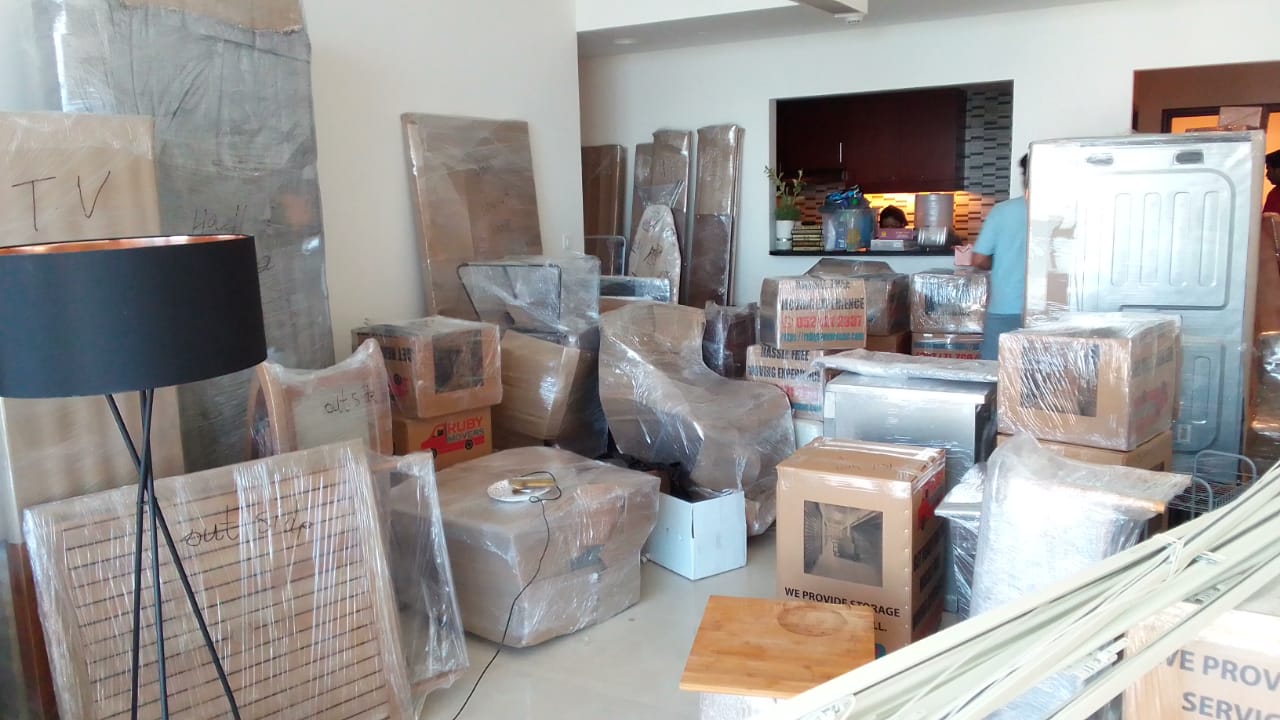
Guidance for material selection
- Edge-initiated risk: 74% of failures at edges for arised finishes in a controlled study. Edge finishing and defects reduce strength and increase scatter.
- Typical glazing thickness: 2.0 to 2.5 mm for picture framing; 2.5 mm offers greater resilience and chip resistance.
- Foam response range: validated test work on polyethylene foams shows temperature-dependent trends across −20 °C to 50 °C. Select density and thickness to meet shock targets in hot conditions.
- Standards alignment: ASTM D4169 evaluates the full packout with drop, vibration, and compression. The 2022 update applies three air vibration levels and reduces the spectrum to about 200 Hz to mirror measured environments. Cite this in SOPs.
Material specifications for framed glass and artwork
| Component | Minimum specification | Purpose |
|---|---|---|
| Mirror or glass carton | Four-piece set sized to the frame | Rigid containment and upright handling |
| Rigid face sheet | Single corrugated sheet, full coverage | Spreads loads and limits pane flex |
| Corner guards | Four per frame | Shields edges where cracks initiate |
| Wrap layer | 3/16 inch bubble or padded paper | Surface protection and conformance |
| Void fill | Dense paper or bubble to zero play | Immobilization against vibration |
Packing Like a Pro
Glass Mirror and TV Packing Protocol, prevents claims, Architectural Digest, framed art packing, mirror carton, corner guards, rigid face sheet, 3/16 inch bubble, upright orientation, ASTM D4169.
How do you pack wall mirrors without damage?
Pack each wall mirror in its own mirror box with a rigid face sheet, four corner guards, dense edge bedding, zero internal play, and upright orientation. Photograph condition first to support claim resolution. Retail mover guidance and conservation sources align on this method.
Why edges drive failures
Poor edge quality can cut glass edge strength by about 50 percent, which makes corners the highest-risk zone under vibration and handling. Rigid face sheets and corner guards reduce edge stress and distribute loads away from flaws.
Climate and cushioning facts
Polyethylene foam shock behavior changes with temperature across −20 °C to 50 °C; clearance must allow the foam to deflect without bottoming in hot UAE conditions. Keep mirrors vertical to reduce bending.
Procedure
Document condition
Photograph the glass, frame joints, and backing, then note chips or scratches. Support corners when lifting framed works to avoid twisting.
Stabilize the glazing
Apply a low-tack tape X on the glass to retain fragments if breakage occurs. Place a full-coverage corrugated face sheet before any wrap. Home Depot’s mirror guide specifies face protection and a size box.
Wrap and guard edges
Use 3/16 inch bubble or padded paper for surface protection. Install four corner guards to shield the weakened edge zone identified in edge-strength research.
Box upright and immobilize
Insert the wrapped mirror into a mirror box matched to its dimensions. Bed the perimeter with crushed paper so there is no internal movement. Keep the mirror vertical and mark orientation. United Van Lines confirms the single-item mirror box and edge bedding method.
Load and brace
Stand mirror boxes vertically with padding between units. Block and brace to stop the tip and flex during transport. Museum handling guidance supports vertical stacking with interleaf padding.
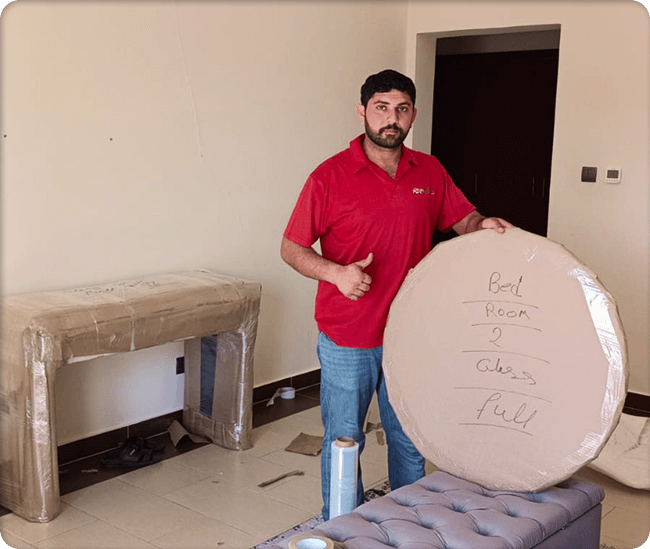
Materials and specifications for wall mirrors
| Component | Minimum specification | Purpose |
|---|---|---|
| Mirror box | Four-piece set matched to mirror size | Rigid containment and vertical handling |
| Rigid face sheet | Single corrugated sheet covering the full pane | Spreads loads and limits pane flex |
| Corner guards | Four per mirror | Shields edges where cracks initiate after strength loss |
| Edge bedding | Crushed paper placed around the perimeter | Eliminates voids and locks orientation |
| Wrap layer | 3/16 inch bubble or padded paper | Surface protection and conformance |
| Cushion check | Foam behavior verified across −20 °C to 50 °C | Ensures clearance works in the heat |
Standards and testing framework
ASTM D4169 evaluates the complete packout with drop, vibration, compression, and other hazards on the same specimen. The 2022 revision updated the air vibration profile, lowering the upper frequency to about 200 Hz and using three intensity levels; accredited labs summarize the change and its rationale. These updates support method selection for fragile glass.
What is the correct way to pack and transport a flat-screen TV?
Keep the TV upright in its original carton or a purpose-built TV moving box with fitted foam end caps. Eliminate all internal play with gap-fill before sealing. Mark orientation on every face and secure the box so it cannot tip or slide during transport. UPS, Best Buy, and U-Haul all instruct upright transport to reduce panel stress and avoid screen damage.
Required equipment and setup
Use an adjustable TV moving box or the OEM carton with matched foam end caps. U-Haul specifies keeping the TV box upright and stabilized between flat, sturdy items or tied to rub rails to limit jostling; their kits cover many common sizes. Add a screen protector and gap-fill so the set cannot shift.
Step-by-step procedure
- Photograph the screen and cabinet; record the model and serial to support any claim.
- Fit the foam end caps and screen protector; slide the TV into the inner sleeve if using a kit.
- Insert the sleeve into the outer carton; add gap-fill until there is zero internal movement; seal all seams.
- Label UP on all faces with directional arrows.
- Load the carton upright against flat, stable structures; tie off or block and brace to prevent tipping. U-Haul’s guidance calls out upright positioning and stabilization to reduce road-turbulence damage.
Standards and test parameters
Best Buy warns never to lay a TV flat because pressure on the panel can cause cracks; remain upright during transport. ASTM D4169-22 revised the air-vibration profile to mirror measured environments, using three sequential test levels (low, medium, high) with typical durations of 27 minutes, 10 minutes, and 3 minutes per axis and a spectrum that now tops near 200 Hz. Upright orientation with fitted foam reduces panel and mount stress under these inputs.
TV packing configurations
| Scenario | Primary container | Cushion set | Gap-fill and immobilization | Labeling and stabilization | Orientation |
|---|---|---|---|---|---|
| Using original manufacturer packaging | OEM TV carton supplied with the set | Model-specific foam end caps and screen protector | Fill any added voids so there is no internal play before sealing | UP arrows on all faces; secure between flat, sturdy items or tie to rub rails | Upright only |
| Using a purpose-built TV moving box | Double-wall adjustable TV box kit | Foam end caps sized to the screen; a protective sleeve is provided | Add gap-fill until zero movement; tape all seams | UP arrows; stabilize in the truck to prevent jostling during road vibration | Upright only |
| Air or long-haul shipment scenario | Package validated to ASTM D4169-22 | End caps plus added corner/edge padding per test results | Verify immobilization after vibration exposure; refill if any play appears | Directional arrows and “Fragile” per carrier policy; block and brace | Upright only |
Loading checks
- Do not lay the TV flat in a vehicle; Best Buy states “Never, ever lay the TV flat,” citing panel-pressure and crack risk.
- Keep the TV box upright at all times and stabilize it between flat, sturdy objects or tie it to rub rails; U-Haul provides this as step-level guidance.
- Place orientation arrows on the outside of the box; UPS includes this in its TV shipping instructions.
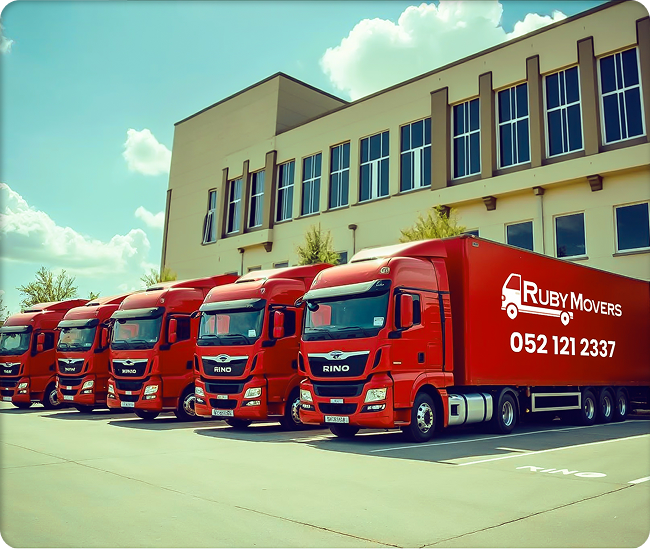
Protocol checklist
Glass and framed art
- Tape X on glass
- Rigid face board
- Padded wrap
- Corner guards
- Mirror carton
- Dense void-fill
- Upright load
Wall mirrors
- Mirror box sized to the item
- Corner protection
- Crushed-paper edge bed
- Seal and label for orientation
- Vertical placement
Large or heavy glass
- Custom wood crate
- Internal foam rails
- Block and brace in the vehicle
- Condition photos before and after
Flat-screen TVs
- Original or purpose TV kit
- Foam end caps
- Fill all gaps
- Keep upright
- Mark orientation on all sides
Claims prevention
- Choose a valuation in writing
- Inventory high-value items
- Keep receipts
- File claims per FMCSA guidance
Conclusion: Lock In a Zero-Claim Move for Glass, Mirrors, and TVs
High-value items fail at edges, faces, and mounts. A consistent, standards-aligned protocol prevents flex, stops edge-initiated cracks, and keeps claims off your desk. Pack one item per correctly sized mirror or glass carton, or a purpose TV box with fitted foam end caps. Add a rigid face sheet and corner guards. Maintain working cushioning clearance. Immobilize the load to zero internal play. Keep every unit upright from the packing bench to the truck. Finish with full photo documentation, model and serial capture for TVs, clear orientation labels, and valuation set before loading.
Follow the same sequence every time: inspect and document, protect faces and edges, box or crate, immobilize and orient upright, load and secure. Crews that run this sequence cut error rates and shorten claim reviews because the records are complete and defensible.
FAQs: Glass, Mirror, and TV Packing Protocol
Why insist on upright orientation for TVs and framed glass?
Upright positioning reduces panel and frame bending. Loads stay where protection is strongest, which lowers flex and crack risk.
Can two framed pieces share one mirror carton if they are small?
No. Use one framed item per mirror or glass carton. Doubling up creates face-to-face impacts and makes immobilization unreliable.
What does zero internal play mean in practice?
Seal the carton, then gently rock it. If anything shifts, reopen and add dense paper or bubble until movement stops.
Do I need both corner guards and a rigid face sheet?
Yes. Most failures start at edges and corners. Corner guards shield the weak zone. A rigid face sheet spreads loads and limits pane flex.
Is 3/16 inch bubble adequate?
It is suitable for surface protection and conformance when combined with a face sheet, corner guards, and dense edge bedding. For heavy or oversized glass, add foam rails or use a crate.
Can I transport a flat TV if I cushion it well?
Do not lay a TV flat. Flat transport increases panel pressure and flex. Keep the set upright in its OEM carton or a purpose-made TV box with matched foam end caps.
Which photos should I capture for documentation?
Front and back faces, all edges and corners, any existing defects, labels and serials for TVs, and the sealed carton with orientation marks. Keep timestamps and tie photos to the inventory.
When should I crate instead of using a mirror carton?
Crate heavy, thick, or oversized glass, such as table tops. A crate provides rigid framing and controlled clearance so foam rails can work during vibration.
What material choices matter most in hot climates such as Dubai and the UAE?
Pick bubble with strong air retention, foam densities that keep performance at elevated temperatures, and tapes that hold adhesion in heat. Maintain clearance so foam can deflect without bottoming.
How do valuation and insurance fit into the protocol?
Set the valuation before loading. Record serials and models, note pre-existing condition, and attach photos to the inventory. This speeds any claim review and supports a defensible outcome.



